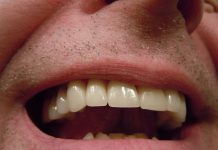
Fear, tiredness, mental exhaustion, tremors and shortness of breath are the main signs that you are experiencing an anxiety attack, which can happen in an intense or mild way. However, due to lack of knowledge, we often do not associate symptoms with anxiety, but with other diseases.
In addition to the difficult identification, there is also another problem: how to control them? Feeling anxious in different everyday situations is perfectly normal, however, some symptoms characterize that the situation may be at a pathological level and need the assistance of a specialist.
Before knowing how to control it, it is necessary to know the main symptoms of the crisis. Check it out below:
- Nervousness, agitation or tension
- Feeling of imminent danger
- Increased heart rate
- Rapid breathing (hyperventilation)
- Muscle tension
- Sweat
- Tremors
- Feeling weak or tired
- Problems concentrating or thinking about anything other than your current concern
- Problems falling asleep
- Gastrointestinal problems
- Difficulty controlling concerns
- Need to avoid situations that generate anxiety
Although some of these symptoms can occur frequently in the lives of some people, anxiety attacks are characterized by presenting them in a much more intense way than “normal”.
It is important to note that not all symptoms appear in every crisis and that not all people experience the same symptoms, which is why looking for a doctor when you frequently experience the above symptoms is so important.
It is worth mentioning that these crises can arise suddenly, but they can also result from stressful situations of various scales. Check out the photo gallery above for some tips to control anxiety attacks! Remember that seeking help is always the best way out. So, remember that you are not alone.
It is important to remember that the information given here is informative, and does not replace the advice and accompaniment of doctors, nutritionists, psychologists, physical education professionals and other specialists.












